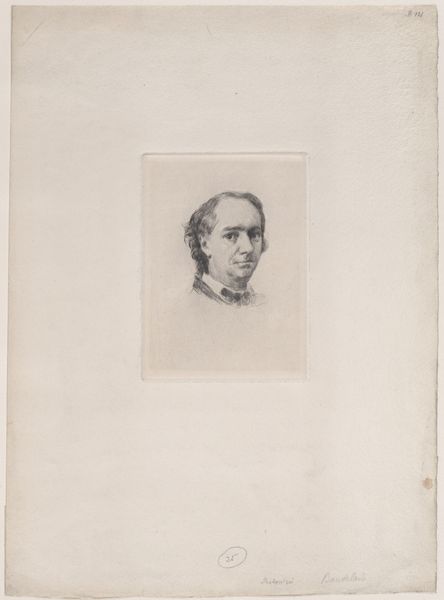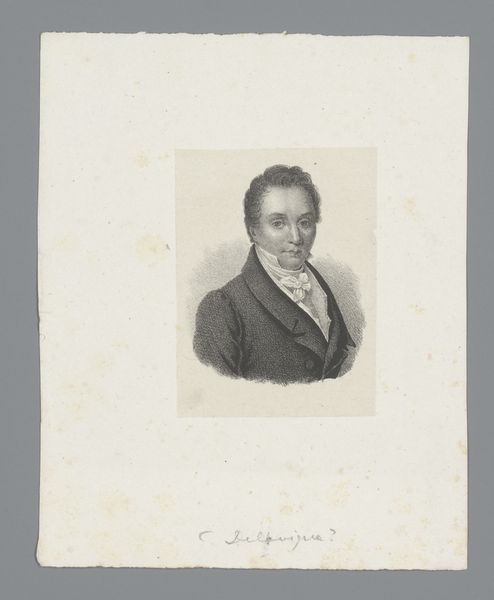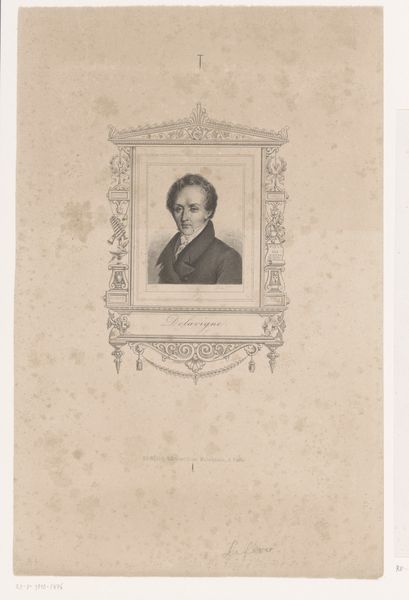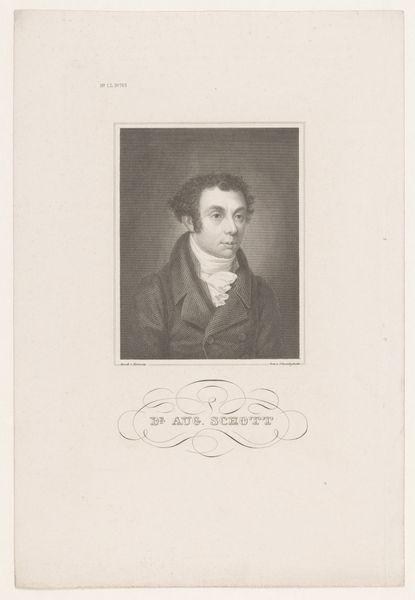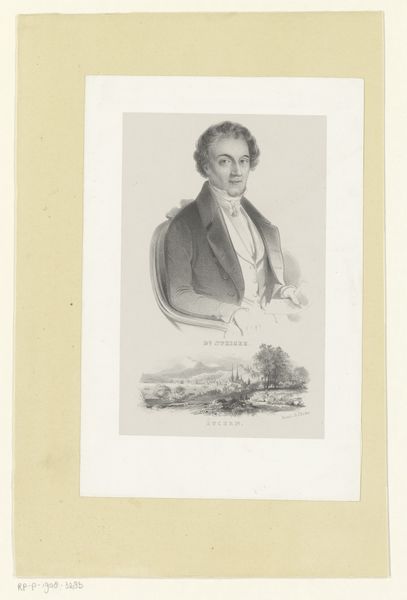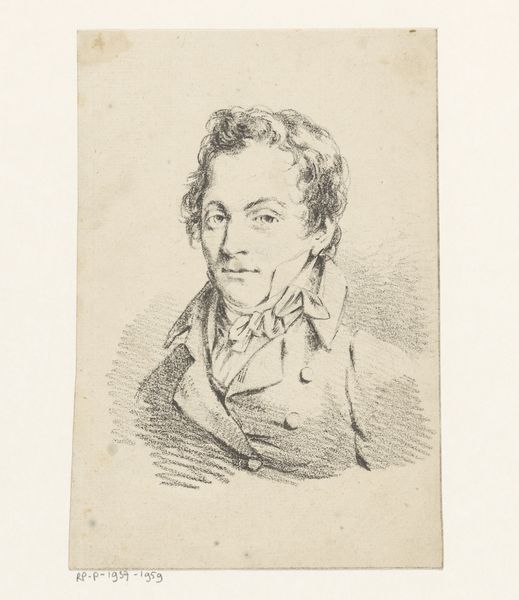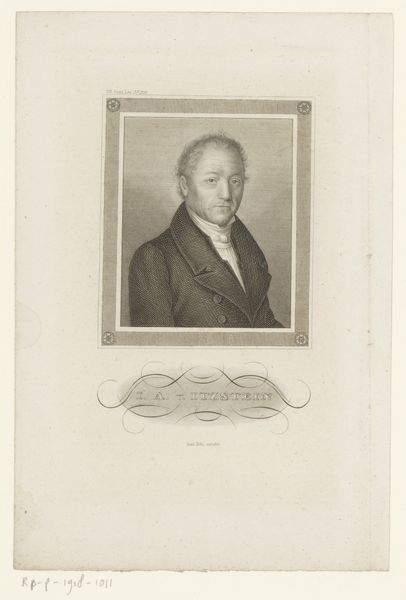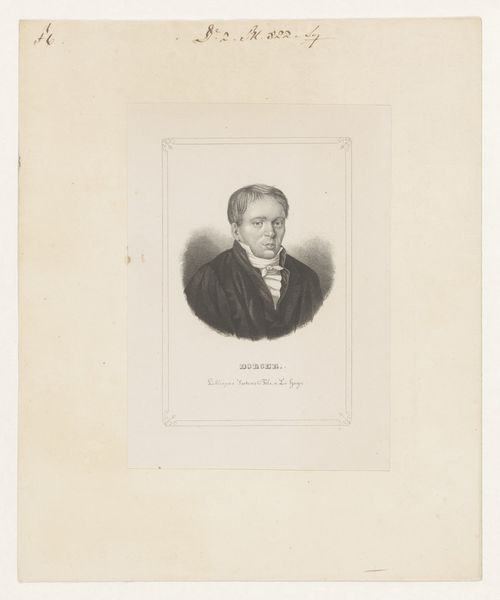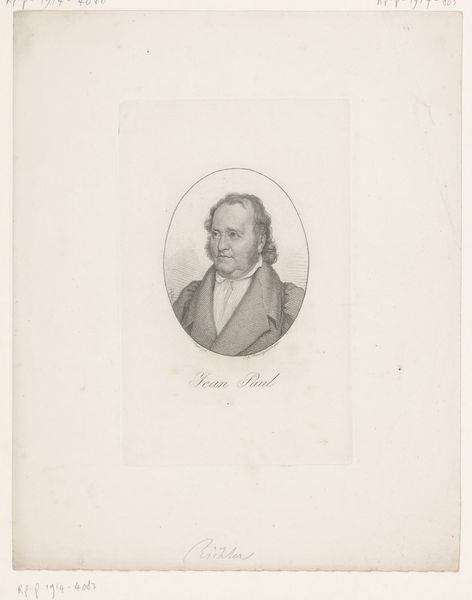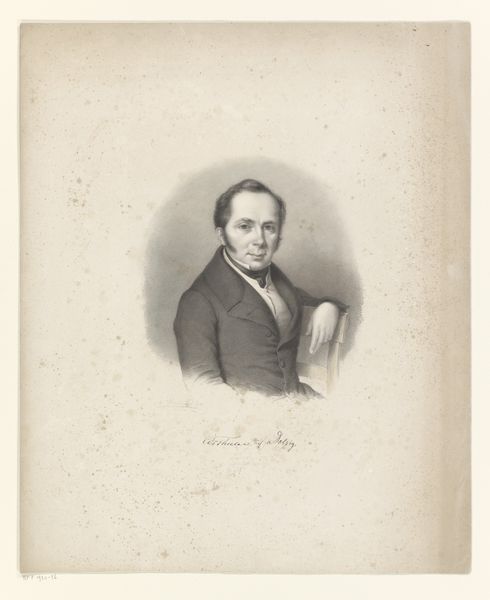
engraving
#
portrait
#
pencil drawn
#
neoclacissism
#
old engraving style
#
history-painting
#
engraving
Dimensions: height 192 mm, width 145 mm
Copyright: Rijks Museum: Open Domain
Angelo Zaffonato made this print of C.G. Scottus Meratensis, likely in the early 19th century, using engraving. Engraving was a popular method for the reproduction of images, and this portrait provides insight into the social function of art at the time. Note the subject's formal attire and composed demeanor, indicative of his status. The inscription identifies him as C.G. Scottus Meratensis C.R.S.P., suggesting he was a member of a religious order, the Congregation of the Regular Clerics of Somasca. This portrait, like many others from the time, served to immortalize and commemorate individuals of importance within specific social circles. The choice of engraving as a medium made the image reproducible, allowing for wider distribution among the sitter's peers or followers. To fully understand the significance of this portrait, we would need to delve into the history of religious orders in the Netherlands and the social context in which figures like Scottus Meratensis operated. Art history thus relies on broader social and institutional histories to give meaning to what we see.
Comments
No comments
Be the first to comment and join the conversation on the ultimate creative platform.
